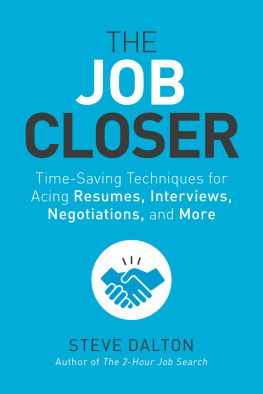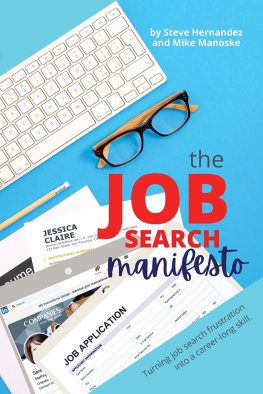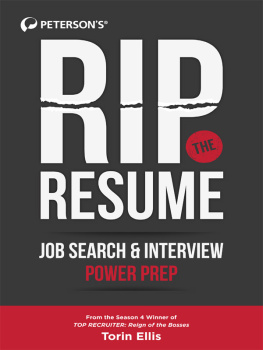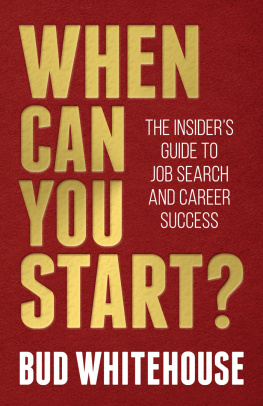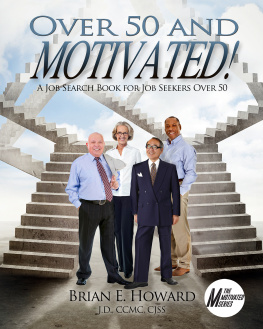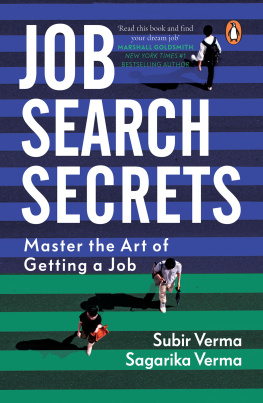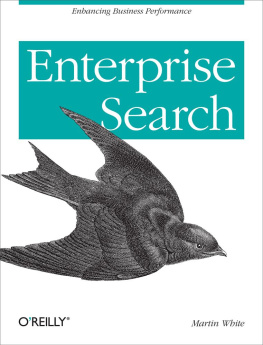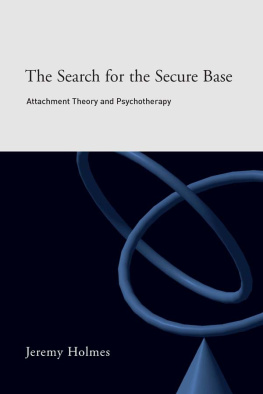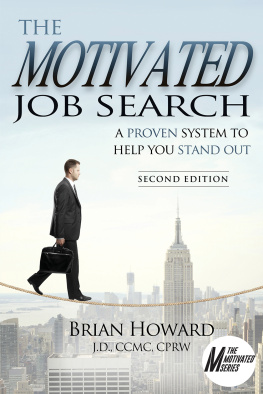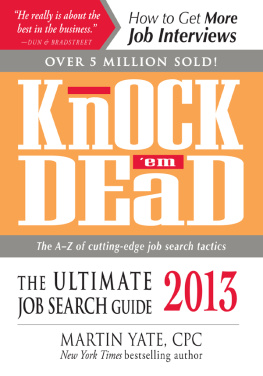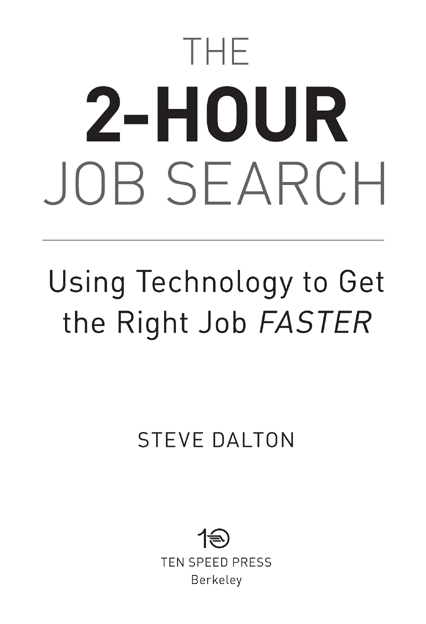Copyright 2012 by Steve Dalton
All rights reserved.
Published in the United States by Ten Speed Press, an imprint of the Crown Publishing Group, a division of Random House, Inc., New York.
www.crownpublishing.com
www.tenspeed.com
Ten Speed Press and the Ten Speed Press colophon are registered trademarks of Random House, Inc.
Cover illustration copyright Andrey Rudin/iStockphoto
Library of Congress Cataloging-in-Publication
Data Dalton, Steve, 1976
The 2-hour job search : using technology to get the right job faster / Steve Dalton. 1st ed.
p. cm.
Summary: A job-search manual that gives career seekers a systematic formula to efficiently and effectively target potential employers and secure the essential first interviewProvided by publisher.
1. Job hunting. 2. Job huntingComputer network resources. 3. Career developmentComputer network resources. I. Title. II. Title: Two hour job search.
HF5382.7.D35 2012
650.14dc23
2011036598
eISBN: 978-1-60774-171-8
Cover design by Katy Brown
Interior design by Chloe Rawlins
v3.1
In loving memory of my mother,
Dorothy Dalton

CONTENTS
STEP 1
PRIORITIZE: The LAMP Method

STEP 2
CONTACT: Boosters, Obligates, and Curmudgeons

STEP 3
RECRUIT: Informational Interviewing

INTRODUCTION
Technological progress has merely provided us with more efficient means for going backwards.
ALDOUS HUXLEY
Ive heard numerous theories for why the job search is so difficult these days: a bad economy, bad luck, outsourcing, cronyism, poor work ethic, too much reality TV. During my six years as a senior career consultant at Duke Universitys Fuqua School of Business, Ive helped people of all interests and ages through the job search process, and I attribute its difficulty to something else entirelytechnology.
Technology has made our lives easier in so many ways, but it has only complicated the modern-day job search. Before Internet job postings grew in popularity in the late 1990s, the job search was a simple (though tedious) process:
STEP 1 (OPTIONAL). Find classified ads in newspaper.
STEP 2. Mail resume and cover letter to potential employers.
STEP 3. Wait for invitations to interview.
That doesnt sound so bad, right? Ship out resumes and cover letters, and whoever is interested writes you back. Very straightforward. Of course, those with contacts at the potential employer still fared best, not having to rely on a piece of paper to make their first impression for them. But cold calls by phone or mail were often all it would take to get an interview.
Fast-forward a decade. The Internets in full swing, websites will find relevant job postings for you, and resumes can be submitted online at any hour of the day. Although its easier than ever before to find jobs, why does it now seem so much harder to actually get one? In short, technology made applying for jobs so efficient that hiring became inefficient.
Throw in a global recession, and suddenly youve got a perfect storm. However, even if the economy were to fully recover tomorrow, the job search still wouldnt go back to how it was.
Technology has effectively ruined the mail and wait job search strategy because it is now far more difficult for employers to pick out the few interesting applicants from the massive new influx of casual applicants.
Applying for jobs used to require a significant amount of time. Time to search classified ads in your local paper, type and print your resume and cover letter on nice paper, and package them up in an envelope for mailing. Not everyone had that kind of time, and applying to any job required at least a minimal amount of researchheading to the library to find what address to mail your resume to, for example.
With the Internet, applying for a job can take less than a minute. Google a possible employers name, click on the Careers section of their website, and submit your resume. Done. When its that easy, anyone can do it (and everyone does). Thus, recruiters who before Internet job postings used to get a dozen or so applications from mostly local candidates in several weeks for a job now get hundreds or thousands from across the country within hours.
Who has time to read hundreds of resumes? Recruiters today read resumes the way most of us read websitesignoring a majority of whats on the page and just skimming the headlinesin the case of resumes, usually looking at only schools attended and previous employers, if that.
Thats assuming hiring managers actually look at resumes received online. My students commonly describe online job postings as black holes for resumes, and I agree. Because there is no way for a hiring manager to read all of those applications, the only fair thing to do is not read any of them, so online applications may be avoided entirely. (That this attitude saves a hiring manager many hours of additional work is hardly coincidental!) Employers these days rely instead on internal referrals to decide whom to interview. Getting internal referrals efficiently is the core challenge of the modern job search, in factand well return to that topic shortly.
Online job postings are not inherently evil, nor was Becca being lazy by applying for so many jobs onlinequite the opposite, actually. She was simply following the same old mail and wait paradigm her parents did, except electronically rather than with stamps and envelopes. It felt like progressthe websites would say something like Your application has been successfully submitted, each time (the closest thing she ever got to positive reinforcement in her search), and conventional wisdom said you reap what you sow and hard work pays off. This strategy is also known as satisficing. Satisfice is a hybrid word formed from satisfy and suffice. Coined by Nobel prizewinning social scientist Herbert Simon in 1956, the term describes a persons tendency to select the first available solution that meets a given need, rather than an optimal solution.
The Resume Black Hole
I first met Becca (not her real name) in late March, a very high-stress time for MBA students. On-campus recruiting has ended by then, so students without jobs at that point tend to panic. Their May graduation date is looming, and they realize that continuing to avoid the rejection-heavy off-campus search (which most acknowledge they should have been doing all along) is no longer an option.
Like most of her peers, Becca had assumed she would find her job while still on campusshed been at the top of her class her whole life, after all. But she hadnt found it, having underestimated the number and caliber of her competitors. She was so anxious that she canceled her spring break trip with a group of her classmates in order to focus on her job search. (Months later, she would call these spring break efforts a garbage in, garbage out job search.)


